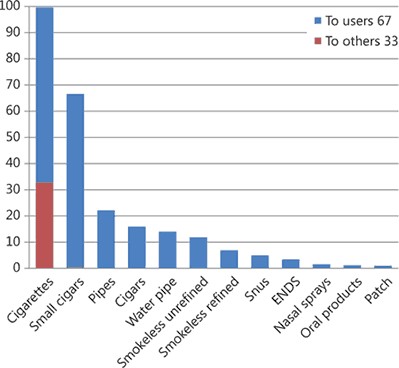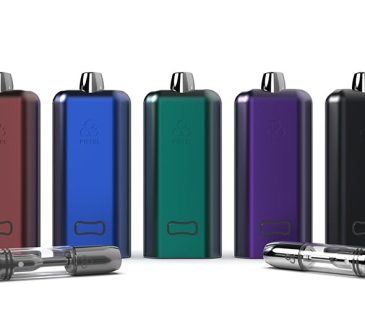Back in 2015, Public Health England (PHE) made an official declaration stating that “vaping is at least 95% safer than smoking.” This statement was reaffirmed by the health organization in 2018 during the launch of their campaign titled “PHE’s Health Harms.” While the notion that vaping is 95% safer than smoking has gained global attention, many vapers remain unaware of the scientific evidence that formed the basis of PHE’s declaration. Let’s delve into the scientific facts behind this statement together.
A long process and many studies
The story begins in 2014 when the PHE commissioned a report [1] to investigate the health effects of vaping. In 2015, the report was submitted to the organization, authored by John Britton and Ilze Bogdanovica from the UK Centre for Tobacco and Alcohol Studies at the University of Nottingham. Upon reviewing the report, the PHE made an official declaration stating that “the risk associated with the use of electronic cigarette products currently available on the market is likely to be extremely low, and certainly much lower than smoking. The health risks of passive exposure to electronic cigarette vapor are also likely to be extremely low.”
The origin of the 95% figure

To gain a deeper understanding of the origins of the “at least 95% safer” statement, we should examine another study conducted by an “international expert panel convened by the Independent Scientific Committee on Drugs.” These researchers developed a multi-criteria decision analysis model to assess the relative importance of various types of harm associated with nicotine-containing products.
The study evaluated twelve different products based on fourteen defined criteria of harm, seven of which focused on harm to users and the remaining seven on harm to bystanders. The researchers assigned scores to each product on each criterion, reflecting the average level of harm globally. The scoring system utilized a scale where 100 represented the most harmful product for a specific criterion, while a score of zero indicated no harm.
The results were as follows:

As evident from the information presented above, electronic nicotine delivery systems (ENDS), commonly known as e-cigarettes, received a score of less than 5 on the harm criteria scale. This indicates that these devices pose approximately 5% of the risks associated with smoking. In simpler terms, vaping is considered to be at least 95% safer than smoking.
Upon thorough examination of the pertinent scientific literature, the PHE reached the conclusion that the potential hazards linked to vaping are likely to be “extremely low” when compared to the risks associated with smoking.
Formaldehydes and acrolein
To ensure the accuracy of the findings, the UK government conducted an investigation into the compounds present in vapor, particularly formaldehydes and acrolein.
The first study examining these emissions was a Japanese study, initially mentioned in 2014 by the Japan Times. According to the report, “during tests on various electronic cigarettes, one device emitted formaldehydes at levels 10 times higher than tobacco cigarettes.” However, it is worth noting that this study was never published, and the PHE clarified that such toxic emissions occur only when e-liquid is overheated.
Subsequently, in January 2015, another study [5] was released. It revealed that when using a third-generation personal vaporizer at maximum power for 3 to 4 seconds, the formaldehyde levels in the aerosol were “5 to 15 times higher than those in a tobacco cigarette.” However, the PHE responded by explaining that these results were obtained through testing on smoking machines, which do not accurately replicate real-life vaping conditions. It was also highlighted that no vaper would take such long puffs at such high power. Additionally, when e-cigarette users experience a dry hit (where the e-liquid supply is depleted), they instinctively reject the vapor due to the unpleasant taste, which is not detected by smoking machines. Therefore, while the presence of these toxic substances cannot be denied when e-liquid overheats, vapers would not inhale them repeatedly in practice.
Vaping and Dry Hits
A few months later, the findings were supported by a study [6] conducted by Dr. Konstantinos Farsalinos, a renowned anti-smoking expert and research fellow at the Onassis Cardiac Surgery Center in Athens and the University of Patras in Greece. Dr. Farsalinos, who has been conducting laboratory and clinical research on e-cigarettes since 2011, replicated the conditions under which high levels of formaldehyde had been detected using a personal vaporizer.
Dr. Farsalinos reported that none of the participants in the study were able to vape under the same conditions as the smoking machines due to experiencing dry hits, which led them to spit out the vapor. Furthermore, he stated that under normal usage, the levels of toxic compounds present in the aerosol were either absent or negligible.
In a similar vein, other scientists [7] have demonstrated that vapers exhibit significantly lower levels of acrolein and crotonaldehyde in their urine compared to tobacco smokers.
Note: It is important to clarify that a vaporizer can produce higher levels of formaldehyde than smoking only under poor and unrealistic conditions. However, under normal use, the vapor generated by an electronic cigarette contains either “absent or negligible” levels of toxic compounds.
Vaping and lung problems

Another significant study [8] investigating the health effects of vaping was conducted in February 2015. The researchers locked mice in a box and exposed them to the aerosol from an electronic cigarette, concluding that vaping leads to “lung inflammation and infection, and even cancer.”
However, the PHE pointed out several issues with this study. Firstly, an e-cigarette should be viewed as a tool for harm reduction in comparison to smoking. Therefore, any study aiming to highlight problems caused by vaping should also compare them to the problems caused by smoking, which this study failed to do.
Secondly, the group of mice exposed to e-cigarette vapor was found to be “much more stressed” than the control group, and stress is known to impact bacterial and viral responses. Consequently, the reliability of the study’s results was called into question.
Furthermore, due to the confined conditions of the mice, they also experienced “repeated nicotine poisonings.” The UK Department of Health clarifies that the accelerated weight loss, reduced immunity, and premature death observed in the animals were more likely a result of prolonged stress and nicotine poisoning rather than exposure to free radicals. It is worth noting that the levels of free radicals in the e-cigarette aerosol, as indicated by the study, were “1,000 times lower than in tobacco cigarettes.”




